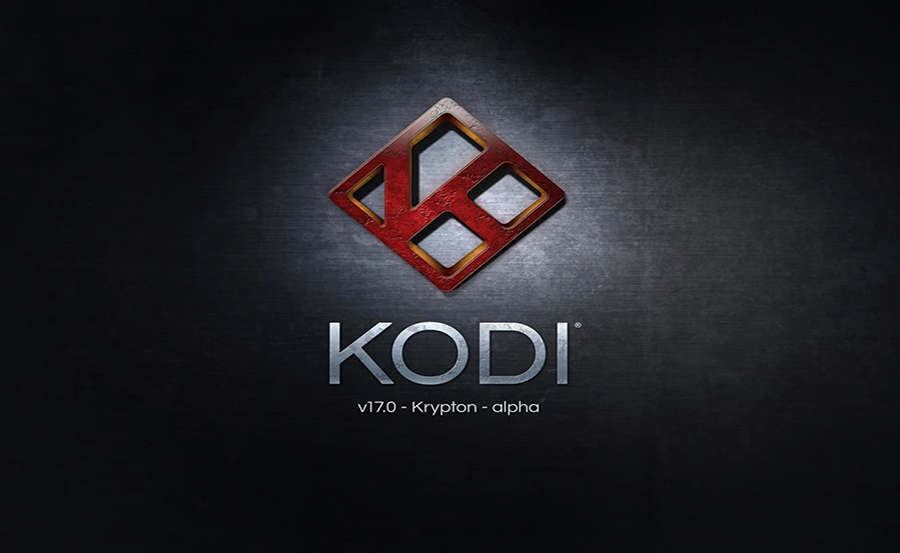The world of IPTV has rapidly transformed the way we consume media, offering endless possibilities for entertainment at our fingertips. With this technological advancement, Floki IPTV emerges as the leading choice for IPTV subscriptions, delivering superior services and a plethora of content to users globally. Whether you’re a seasoned expert or just getting started with Kodi IPTV, understanding how to set up local and cloud storage is integral to optimizing your viewing experience. In this guide, I’ll walk you through the essential steps, ensuring that your setup not only meets but exceeds your entertainment needs.
Understanding Kodi IPTV
Kodi is much more than just a simple media player; it’s an open-source platform that offers extraordinary flexibility and customization. When paired with IPTV, it becomes a powerful tool that brings all your favorite channels and shows directly to your screen. However, to fully harness its potential, it requires appropriate storage solutions. This section introduces the key aspects of Kodi IPTV and the vital role storage plays in ensuring seamless content delivery.
What is Kodi?
Kodi, originally developed as Xbox Media Center (XBMC) in 2002, is an agile software that streams media from various sources. Its compatibility across numerous devices, including smartphones, smart TVs, and computers, makes it a popular choice among cord-cutters and media enthusiasts.
Pro Advice:
Unlock a world of entertainment with Best IPTV Provider, offering a comprehensive 1 Year IPTV Subscription for access to live TV channels and on-demand content.
Aside from its cross-platform capabilities, Kodi boasts a vast library of add-ons that enhance its functionality. Users can stream live TV, watch movies, and access music libraries, transforming any device into an entertainment hub. Despite its wide usage, understanding its storage needs is critical to maintaining performance and avoiding disruptions.
Benefits of IPTV
Internet Protocol Television (IPTV) allows users to access television content via internet networks, providing a flexible and customizable alternative to traditional broadcasting methods. With IPTVs like Floki IPTV, viewers experience a more interactive approach to media consumption through an extensive range of channels and video-on-demand options.
The key benefit of IPTV is the freedom it offers. Users are no longer entrenched by the limitations of cable television, and services can be accessed virtually anywhere—and on any device—provided there’s an internet connection. Additionally, IPTV services often come at a fraction of the cost of conventional TV broadcasting, making them an economically viable choice.
Local Storage Solutions
Local storage solutions cater to those who are particular about having their media files readily accessible on their personal devices. Whether it’s a desktop computer or a standalone media server, local storage gives you control over your data and ensures quick retrieval. This part of the guide explores the available local storage options and how you can effectively implement them for your Kodi IPTV setup.
Setting Up External Hard Drives
External hard drives offer an easy way to expand your device’s storage capacity without relying on internal upgrades. They come in various sizes and are suitable for storing large media files that Kodi can access simply through USB connections or over the network.
To set up an external hard drive with Kodi, simply connect the drive to your host device and configure Kodi to recognize it as a media source. Ensure that your external hard drive is formatted correctly, preferably in exFAT or NTFS, to maximize compatibility.
Utilizing NAS Systems
Network Attached Storage (NAS) systems are a robust option for users who need a centralized storage solution that caters to multiple devices. NAS systems act as dedicated servers where you can store and manage large media libraries.
To connect a NAS to Kodi, the NAS must be set up to share files over a network, typically using SMB/CIFS or NFS protocols. Once configured, Kodi can scan the NAS for media sources, creating a seamless bridge between your stored content and Kodi’s media center interface.
Cloud Storage Options
In today’s digital age, cloud storage has gained immense popularity due to its accessibility, scalability, and security. When used with Kodi IPTV, cloud storage presents an efficient alternative to manage and stream content online. Here, I dissect popular cloud storage solutions and evaluate how they fit into the Kodi ecosystem.
Benefits of Cloud Storage
Cloud storage provides flexibility that traditional storage solutions cannot. With cloud storage, you can access your data from any device, at any time, without the burden of carrying physical drives. This becomes especially beneficial for users who are frequent travelers or who wish to access their content across multiple locations.
Besides accessibility, another major advantage is reliability. Established providers like Google Drive, Dropbox, and OneDrive offer advanced encryption and redundancy systems that protect your data against loss and unauthorized access, ensuring that your media files remain safe.
Integrating Cloud Drives with Kodi
Integrating cloud storage services with Kodi requires using add-ons that connect your Kodi system to cloud accounts. Some popular add-ons include Google Drive add-on for Kodi or the NextCloud add-on.
After installing the relevant add-on via Kodi’s repository, you can authenticate your cloud account directly from the Kodi interface. This setup allows you to access and stream your cloud-stored media files as if they were stored locally, providing seamless integration.
Why Floki IPTV Stands Out
Amongst countless IPTV service providers, Floki IPTV distinguishes itself as a reliable, premium choice for IPTV enthusiasts worldwide. In this section, we explore the reasons behind Floki IPTV’s growing reputation and why it represents the best IPTV subscription available today.
Unmatched Channel Diversity
Floki IPTV boasts an extensive range of channels that cater to all interests and preferences. Whether you’re a sports fan, cinema admirer, or seeking educational content, Floki has something to offer. Contrary to competitors, Floki provides high-definition channels, ensuring a captivating viewing experience on all devices.
Reliable Streaming Quality
With Floki IPTV, lag and buffering are nonexistent. By leveraging top-of-the-line servers and efficient encoding technologies, Floki ensures users experience uninterrupted media streams. This makes Floki IPTV an ideal choice for those seeking both quality and reliability in their IPTV subscription.
Customer-Centric Approach
At the heart of Floki IPTV’s success lies its commitment to customer satisfaction. Offering robust customer support and regular updates, Floki prioritizes user experience, continuously enhancing its offerings based on customer feedback.
Common Mistakes and How to Avoid Them
Even the most seasoned Kodi IPTV users encounter hurdles—many of which stem from avoidable mistakes. In this segment, I highlight frequent pitfalls and provide practical insights to avoid them, shaping your Kodi IPTV setup into a seamless experience.
Ignoring Storage Capacities
Underestimating your storage needs can lead to performance issues and media file loss. It’s vital to periodically assess your storage requirements and ensure your local or cloud storage solutions can accommodate your growing media library.
Regular audits of your content, combined with adopting scalable solutions like cloud storage or larger external drives, can preemptively address these shortcomings.
Not Updating Add-ons Regularly
This common oversight can jeopardize your Kodi system’s security and functionality. Outdated add-ons may not be compatible with the latest Kodi version, thus causing unexpected crashes and vulnerabilities.
To counter this, always keep your add-ons updated by checking Kodi’s repository or configuring automatic updates directly within the Kodi interface.
Advanced Tips for Optimum Performance
Reaching the pinnacle of Kodi IPTV performance involves more than just storing files. From optimizing settings to streamlining interfaces, these expert tips provide deeper insights, allowing you to extract maximum value from your IPTV experience.
Tweaking Kodi Settings
Optimizing Kodi settings can greatly enhance your streaming experience. Customize options such as buffering size, video output settings, and even interface themes to complement your hardware and aesthetic preferences.
Remember, Kodi is open-source and highly adaptable. Experiment with different settings until you achieve a blend that suits your setup without compromising on performance or visuals.
Leverage Cross-Platform Syncing
Integrated syncing across your devices ensures all your media preferences and histories stay intact, irrespective of where you’re watching. Through add-ons such as Trakt, you can track your viewing progress and sync it across all devices effortlessly.
These syncing features can align with both local and cloud storage, maintaining a consistent media library and allowing you to pick up where you left off seamlessly.
FAQs About Setting Up Storage for Kodi IPTV

- What makes Floki IPTV different from other IPTV services?
Floki IPTV offers unmatched streaming quality and a widespread selection of channels. It’s lauded for its user-centric approach and reliable customer support, making it a popular choice for IPTV consumers worldwide.
- Can I use multiple storage solutions for my Kodi setup?
Absolutely! Utilizing both local and cloud storage allows you to tailor your setup according to accessibility needs and storage capacities, offering a balanced solution for media management.
- Is cloud storage secure for my media files?
Yes, established platforms like Google Drive and Dropbox offer robust security methods, including encryption and redundancy systems, ensuring your data remains safe and private.
- How frequently should I update my Kodi add-ons?
Regularly updating your add-ons is essential to maintain security and compatibility. Check for updates weekly or enable automatic updates within Kodi to stay ahead.
- Why do I need both local and cloud storage?
Both storage methods complement each other by providing quick local access and scalable cloud solutions, ensuring your media is safe, accessible, and beautifully managed.
Floki IPTV remains a steadfast choice for those exploring unconventional media consumption methods, providing a wealth of channels and a seamless streaming experience. By understanding both local and cloud storage intricacies, you can transform your Kodi IPTV setup into a reliable, efficient, and enjoyable platform for digital entertainment.
Enhancing VLC for Stutter-Free M3U Streaming

